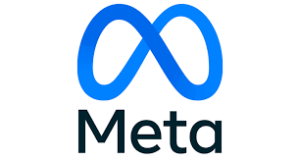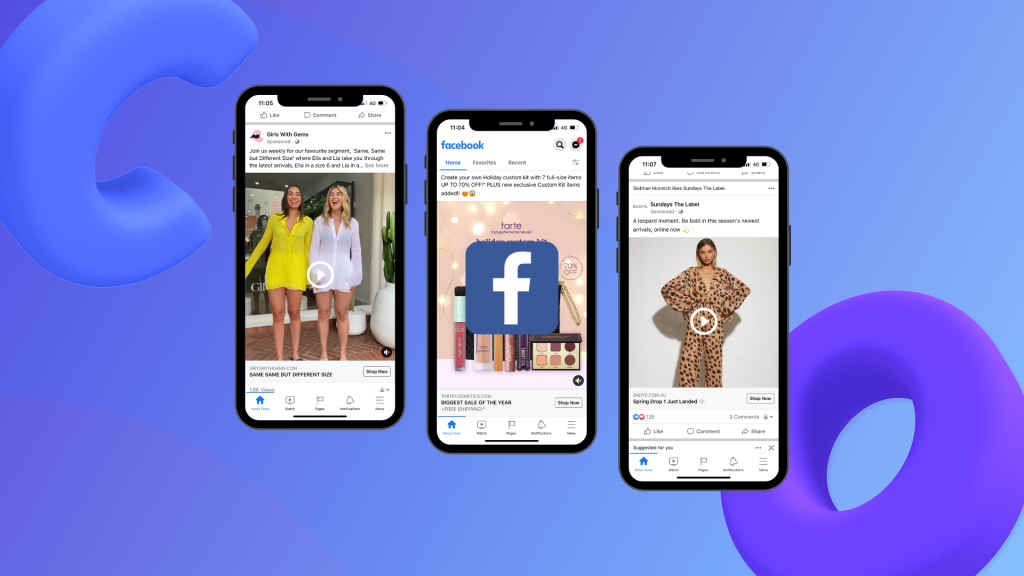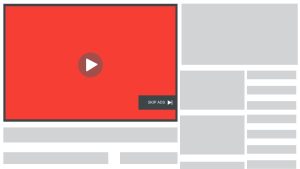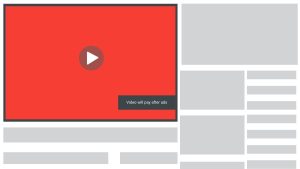Omnichannel Shopping Explained – Leverage Your Buying Cycle
Welcome back, drivers! In this month’s blog, we’ll talk about digital trends and how you can leverage your omnichannel to drive traffic and sales to your business. But before we accelerate into the nitty-gritty, we’re going to hit the brakes for a second and discuss what exactly the omnichannel is and how businesses can use it to really increase the consumer journey.
Alright Then. What Is The Omnichannel?
Omnichannel is not a new term but its implementation has become increasingly popular over the last couple of years. With Covid-19 changing the way we shop, the use of the omnichannel has skyrocketed, with consumers valuing quality and ease over traditional shopping methods. But what exactly is the omnichannel you ask? Well, allow us to fill you in.
The omnichannel refers to a consumer journey that is seamless and effortless. It’s a comprehensive shopping experience that integrates various shopping modes to help make the consumer journey as easy and convenient as possible. But didn’t you just describe multi-channel? No. No, we did not. It might be a little confusing at first but we’re going to break it down for you:
Multi-channel refers to the use of various shopping modes to make a purchase;
Omnichannel, on the other hand, allows buyers to begin their shopping journey using one mode and complete it using another. Still confused? Watch the video below to help gain a better understanding of omnichannel versus multi-channel.
And How Do I Use It To My Advantage?
Now we’re all on the same page, let’s talk about how you can take industry trends to leverage your omnichannel and increase sales.
Understand consumer expectations. If you want to drive your omnichannel to success, it’s important to understand what it is consumers really want out of your business. It is also worthwhile to find out what they expect out of their shopping experience. This can look like everything from click and collect to applying promotion codes at the checkout. Researching shopping trends, target audiences, and the competition will help you figure out exactly what your average consumer is after.
Upsell on all platforms. You know when you’re shopping at a brick and mortar store and before you finalise the purchase the cashier asks if you’re like to add something extra to your cart? Well, this is a technique you can also use on the omnichannel. What’s great about this is you can tailor each upsell to the consumer’s needs. ‘Oh, I can see you’ve added rollerskates to your cart, why not add these elbow pads, too.’ Taking advantage of this can help increase sales and shows each consumer you understand what they’re after and can tailor to their needs.
Blasts. Maybe you’re short on supply and want to inform your customers of such. Or perhaps your state has flooded, (Queensland we’re looking at you) and you’ve had to temporarily close your store. Using the omnichannel to send out any blasts to your customers is not only efficient, but it shows you value them. Additionally, sending out information that consumers need to know will prevent any nasty surprises in the future. You know, ordering stock when it’s actually unavailable, overpromising on pick-up times, or requesting coffee online when the store’s closed. Getting on top of all your blasts early means you can prevent conflict and upset in the future.
Provide promotions. ‘SHOP ONLINE FOR IN-STORE PICKUP AND RECEIVE 25% OFF YOUR PURCHASE!’ How good does that sound? Offering promotions this way means you can actively encourage consumers to use the omnichannel. Plus, because it’s so easy, they’ll probably continue to shop that way again and again.
Ensure the experience is the same all around. You want to focus on your branding across the omnichannel. Your consumers want to know that whether they are shopping online, in-store or even over the phone the experience is the same. This could be something as simple as logos, slogans and colour schemes. You want to be recognisable no matter where consumers find you.
Got Any Tips For Getting Ahead Of The Competition?
So now you know how to take advantage of the omnichannel, here are some tips for helping you overtake the competition.
Google Ads. Not having Google Ads is like being stuck going around a roundabout but never actually getting to turn off. So you just keep going around and around while everyone else passes you by. Then you run out of fuel, stuck forever while everyone else is already at their destination. Alright, maybe we’re being a bit dramatic, but you really are doing your business a disservice if you aren’t paying for Google ads. See, what Google Ads does is expand your business’ reach. But more than that, it advertises to consumers precisely when they are in the market for whatever it is you’re selling/promoting. It can help to raise awareness, sell goods and services and bring in more traffic to your website or store. Ask our team about how we can help you get your Google Ads up and running.
Google My Business. Google My Business helps put your company on the map, literally. It is a digital phonebook that gives consumers all the information they need, including reviews and photos. ‘What does that have to do with the omnichannel?’ I hear you chime in from the backseat. Well, only everything. It gives customers a way to not only identify you but it is one comprehensive place that lets them know all of the ways to shop or contact you. Right from your website, to your brick and mortar store, and even your social media pages Google My Business is a free and effective technique for getting ahead of the competition.
Automation. Why waste time and resources doing things manually? Automation does the job for you so you can focus on the things that matter. Automation on the omnichannel can be something as simple as notifying customers when a product has sold out. Or, it might look like an auto-fill option for returning customers. Additionally, you can tailor automation to the individual, displaying ads that reflect their personal interests and buying habits. The options are endless, really, and automation helps you to work smarter. Not harder.
Understand sales trends. What good is the omnichannel without an audience to use it? To get ahead of the competition here, you’ll have to go back to basics. Research up-to-date sales trends and advertise your products/services accordingly. We also encourage you to look at your own data. When do people shop online versus how often are they in the store? Who is your target audience and what makes them use your goods/services? When you understand industry trends, you can then work on tailoring the omnichannel to consumers’ needs and expectations.
Make The Most Out Of Digital Trends With The Specialists At Get More Traffic
Is your website a highway at peak hour? Because boy, you’ll be getting a lot of traffic with the help of our digital marketing experts. We’re passionate about helping businesses all over Australia harness the power of digital marketing to take their sales to the next level. If you’re ready to give traffic to your website the green light and learn how to increase sales using your omnichannel, contact the team at Get More Traffic today!
December Digital Marketing Industry Updates
Store Inventory Now Searchable on Bing and Bing Local
Local businesses can now list their available inventory on Microsoft’s search engine, Bing and Bing Local. Using Local Inventory Ads (LIA), as well as product ads (non-LIA), Bing collates information on your online shop’s available inventory and lists it on their search engine page results. Bing also provides more details about local businesses, including location, operating hours and reviews. To get your inventory listed on Bing and Bing Local, simply update your LIAs and your product ads to reflect your stocks.
LinkedIn Creators Now Have NEW Live Video, Newsletters, and Discovery features!
LinkedIn is also making some notable upgrades to their creator tools, three new features, to be exact: Get Discovered, Newsletters, and Live Video. First, Get Discovered is an exposure tool designed to help you get discovered by potential followers, wherein LinkedIn will also regularly feature ‘Suggested Creators’ whose content they feel is worth paying attention to. Next is LinkedIn Newsletters, which might prove to be a useful tool for LinkedIn creators looking to further engage their audience on the platform. The Newsletter feature not only allows you to publish a newsletter on LinkedIn, but it also delivers push, in-app, and email notifications to your subscribers, further increasing your reach, engagement, and your overall open rates. Last among the new creator tools is Live Video. Previously, LinkedIn Live was only made available to pages or members that had accumulated over 150 followers and/or connections. Now LinkedIn Live is available to all creators. And being that LinkedIn is a platform for professionals, this would make LinkedIn a viable option for many business and industry-related live shows.
NEW: Facebook Introduces Inspiration Hub to Creator Studio
Facebook’s social media content creator and scheduling tool is getting a new feature that aims to help provide content creators with a lot more data and inspiration. The new Inspiration Hub can be found on the Home tab of Facebook Creator Studio, and is basically a discovery tool that shows you the most popular posts and hashtags that are relevant to your Facebook Page. There are some additional filters you can use to further narrow down your search such as region, page category, and content type. Overall, it’s a useful tool for content creators to figure out what’s trending online and what types of posts are getting the most engagement.
New Tools for Parents & Guardians on Instagram!
In a move to promote a healthier use of their app amongst teenagers, Instagram is going to be rolling out new parents and guardians tools on their platform. The new tools are projected to arrive on March 2022. These tools include allowing parents to set time limits on their teen’s Instagram usage, which pairs well with the “Take a Break” feature that they’re currently launching in a few countries. Instagram is also introducing a new educational hub that will include tutorials and tips from experts to help parents and guardians facilitate conversations with their teens regarding social media usage. Lastly, users that don’t follow your teens’ accounts are no longer allowed to tag and mention them, which should help facilitate better security and privacy for minors.
Landing Pages For Small Businesses: Get The Online Advantage
As an important marketing tool, SMEs across Australia are implementing the use of landing pages into their marketing strategies to bring awareness to their brand and increase conversions. At Get More Traffic, our mission is to help drive success for SMEs across Australia through transparent and results-based services. Our Go! Page services provide small businesses with an outlet to promote their services and prompt visitors to interact with their brand. Here are three quick reasons why your small business needs a landing page.
What the media changes will do to SME’s
We’re in the business of helping small to medium businesses succeed online. We’re experts in getting our clients traffic and leads to help their business succeed and Google and Facebook certainly feature heavily in our digital marketing toolbelt.
The proposed News Media Buying Code in layman’s terms makes companies like Google and Facebook pay news companies when they include a link in their search results or social media feeds. Sounds simple enough right? Well yes, but the impact goes beyond just Google, Facebook and news companies.
Those that consumer media are not Google and Facebook’s customers, the advertisers are, advertisers we support in getting the word out about their businesses.
DID YOU KNOW? We know that the average SME advertiser spends around $30/day on digital advertising. SME’s can advertise across these digital channels for 4-6 consecutive months for the cost of one single newspaper ad for one single day in one single city.
If Google and Facebook need to pay these news outlets, it means their costs rise, and who do you think will suffer Google and Facebook price increases, yes – the advertisers.
The reality is that millions of Australians rely on Facebook and Google to advertise their businesses, so they can make a living, grow their business or in fact live day to day. What would it mean for advertisers if advertising prices go up? They stop or reduce their advertising spend, meaning less eyeballs see them, less new business come their way, less income, less money in their back pocket. It could potentially mean the end of some small businesses, how many? We really don’t know, and we don’t want to find out!
Google Swaps Voice Search On Android
What if you could have your own talking AI without needing to be a billionaire? How much easier would life be for us? And, how much harder would it be for marketers to reach you beyond your AI assistant?
These days, it looks as if AI technology is developing at a rapid pace. What’s more, it also seems that that development is getting an even stronger focus, particularly at Google.
What’s happening at Google?
Changes are happening to voice search on your Android mobile devices. What was once merely a voice-activated search engine is now evolving into AI as Google swaps out its old voice search on Android devices for Google Assistant.
This change hasn’t been rolled out on all devices yet. However, Google did announce a while back that Assistant now resides in at least one billion devices.
For those who’ve noticed the change in the home page of their android phones, the conventional blue and red mic has been swapped out. However, on Chrome for Android, the Google app, and on the Chrome browser for iOS, the mic still seems to be the predominant search tool.
How does this affect SEO and SEM?
One of the main differences between the old voice search and Google Assistant is the type of information provided. Unlike voice search, which usually only provides a list of links and search results, Google Assistant “answers” your queries directly, without needing to provide you with a list of links.
What this means is that it’s a possibility that less traffic will be coming in through mobile searches. Earlier this year, Google also began testing placing ads within the Google Assistant platform, which could mean another channel through which marketers can now source their ads. (as well as yet another revenue channel for Google).
Does this mean that even organic search is going the way of paid advertising? It’s a possibility for mobile devices, as voice assistants like Amazon’s Alexa and Google Assistant continue to grow more advanced each day.
Adobe recently conducted a survey that concluded that 48% of consumers are currently using voice for “general web searches”. These, of course, don’t cover more in-depth content and research related to searches. But if AI is going to be on the forefront of development, then we can expect the number of voice searches to rise in due time, especially as Google Assistant’s set of skills are improving to the point that you can now book a ride and buy movie tickets through Assistant.
So what do we do now?
Should you start thinking about how to optimise your content for voice search? Should you start putting out audio content that users can easily consume and digest? Well, that’s one possible response for this change in organic and paid search.
Author, speaker, and known marketing expert, Seth Godin, once commented that podcasting is the new blogging. In fact, according to some of the statistics collated by podcastinsights.com, “51% (144 million) of the US population has listened to a podcast – up from 44% in 2018 (Infinite Dial 19)”. In other words, audio content is gaining ground in informational content.
Google’s John Mueller gave some tips on how to optimise for voice search, detailing what kinds of content fit and didn’t fit voice search optimisation.
One thing he recommended was to start thinking in terms of audio and voice search itself. What does your content sound like when it’s read aloud? How is your content structured and organised? How are the words on the page structured?
In other words, try to start thinking in terms of voice snippets. Think in terms of Q&A’s, and give a direct answer to any questions that potential readers may ask, and make those Q&A snippets obvious in the way your content is structured.
Remember these two things:
1. Structure your content so that it’s easy for voice search to answer queries using the information that you’ve given. Turn your titles or headers into frequently asked questions, and provide the answer in the first paragraph.
2. Make sure that your content sounds good and cohesive when reading aloud. Try to keep things sounding conversational as much as possible.
AI Assistants are on the rise, and it might be a good idea to start optimising your content for their eventual takeover.
Ranking Higher On Google – Helpful Hints
If you’re a small business owner or marketer, you’ve probably got a goal to increase your online presence and rank higher on search engine result pages.
Structure A Successful Facebook Campaign In 4 Steps
Over 65 million local businesses are utilising Facebook for their marketing campaigns, so how do you ensure that your business is one that consumers turn to?
Tips To Creating Quality Content For Your Business
In a world where content is deemed ‘king’, quality written content takes over. Content marketing is booming, businesses are making their mark, and where does that leave you? Having trouble finding a place to start? Not sure what to create to grasp the attention of your audience? We’ve come up with some simple tips to assist you in creating the quality content for your business that your audience will enjoy.
Why Your Online Store SEO is Failing—and How Australia’s Get More Traffic Can Help
Online store SEO is no easy task. In fact, search engine optimisation for e-commerce stores tends to be markedly harder than it is for blogs and more basic websites. There are several reasons for this added difficulty, from the higher quantity of pages to the fact that e-commerce pages tend to come and go as limited or seasonal products cycle in and out of your inventory.
Many of the reasons for the difficulty with SEO for online stores, though, tends to be self-inflicted. While there are some inherent hurdles with online store SEO that aren’t there with other types of websites, perhaps the biggest challenge with e-commerce sites is that they are also more likely to have potential pitfalls.
Common Errors with SEO Online Store Strategies
Indeed, if your online store isn’t seeing the kind of traffic and conversion rates that you want or need to continue growing your business, any number of errors could be at fault. Here are just a few of the factors that could be contributing to your lack of search engine traffic:
You copied and pasted the manufacturer descriptions rather than write your own – If your e-commerce site carries products from third-party manufacturers, then this strategy might seem like the best way to go. After all, writing original copy for dozens, hundreds or even thousands of third-party products is time-consuming and costly. It’s faster and cheaper just to use the manufacturer’s product descriptions.
The problem is that Google filters out pages with duplicate content, so if you are using manufacturer descriptions, your pages aren’t going to rank. Even if they did, manufacturer descriptions are rarely absorbing and almost never engage customers and encourage sales. In other words, you need unique content.
Some of your pages don’t have any product descriptions – You wouldn’t believe how many product pages across the web have no written content, period. Some site managers will create pages and upload photos, intending to ‘come back later’ to write content. Others will learn that having generic third-party product descriptions hurts their SEO and will just delete all those descriptions and not replace them with new text.
Whatever the reason, if you don’t have description text for your products, your online store SEO is going to suffer. Without text, there isn’t much for search engines to crawl, which means that your pages have virtually no chance of ranking on the first page of a Google search. The bottom line is that you need unique, original, keyword-targeted text for every single product in your store.
Your headings are weak – If you carry third-party products, you must assume that customers are going to be searching for specific brands and model numbers. In addition to more general product-related keywords, it’s important to highlight these specific details—preferably in your headings, page titles, URLs and meta descriptions. If search engines can pick up that information, it’s going to help the SEO for your online store.
Get Help with Your Online Store SEO in Australia
If you are looking for help with your online store SEO in Australia, give us a call at Get More Traffic today. Whether you need keyword research, original product descriptions, tweaks to your headings and metadata or other improvements, we can help. Call us on 1300 332 256 to learn more about our SEO for online store websites.













